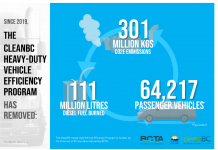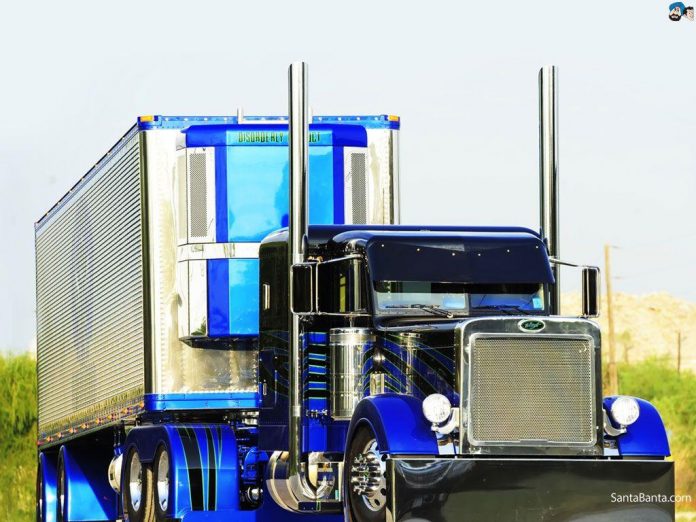The Trucking Industry became complex through the opening months of 2020. New trade agreements with the U.S. Mexico and Canada and low fuel costs enthused the possibilities of a boom in this business sector. But then COVID-19 struck and threw the trucking industry on to the frontlines of defence for a battered economy and a country and a continent the desperately needed the resources of the trucking industry.
According to Trucking HR (a Canadian non-profit organization advancing modern HR solutions for the trucking and logistics industry) over the first 2 quarters of 2020, approximately 34,000 truck driving jobs were lost, a reduction of 10.9% of the truck driving force. COVID-19 was the culprit.
A sharp increase in employment between April and September 2019 was almost completely reversed by decreased employment from October 2019 to February 2020, prior to the declaration of the pandemic. While truck driver employment in April stood 21% below September levels, it was around 8% below its 10-year average, replicating a seasonal pattern that has repeated itself in many years over the past decade.
Trucking HR’s predictions are that for the truck driver occupation, the recovery path shows that by the fourth quarter of 2021, employment will have stabilized and it is expected that by 2023 employment in that sector may even exceed pre-COVID labour market projections.
However with the start of the third quarter of 2020 a different story was emerging. With most of Canada entering Stage 3 of reopening, and fleets resuming hiring amid a surge in demand for freight across North America. Once again truck company operators were finding it difficult to hire new drivers. Part of the problem was exacerbated by conditions in the United States where COVID-19 issues were so bad that qualified drivers that may have entered the work force wanted only to work in Canada. Some companies were willing to pay a premium for drivers to do cross border runs.
Visa issues for drivers in Canada going into the U.S. also became a problem, as in March the U.S. stopped issuing visas to drivers employed in Canada on work permit. Many carriers rely on temporary workers including international students to fill vacancies. That problem is now resolved but there is a backlog of visa applications to be approved.
In order to attract new hires, some carriers are offering monetary incentives or interest free loans to move to a new area of the country. Much of the requirement for drivers though remains in the GTA and southern Ontario, as that is where the bulk of freight is moving in or out. It is also an area that is home to a majority of the offshore driver hires that are coming in and immigrating to Canada. Still an important source of new drivers.
Many of Canada’s most established trucking companies are able to attract new driver hires because, they have a good safety record, or steady employment, or are well respected within the industry. It is more difficult for smaller trucking companies to make new hires. There are issues ahead though for all truck companies.
According to Trucking HR, a “disproportionate” number of Canada’s truck drivers are above 45, which puts them in an age group at a greater risk of experiencing complications of Covid-19, says a report from Employment and Social Development Canada. More than 60% of today’s drivers are over 45 and 30% are over 55. This puts many drivers into a dangerous age group of being adversely affected by COVID-19. A lot of older drivers are deciding to exit the industry.
So, in spite of the setbacks caused by COVID-19 Canada will soon be at a shortfall of 25,000 truck drivers by 2023 according to the Conference Board of Canada and Trucking HR. “Canada is facing a serious shortage of truck drivers,” says Kristelle Audet, principal economist with the Conference Board of Canada. Since 2016 alone, the number of truck driver vacancies has more than doubled. So who will fill this requirement for new drivers?
We are not alone is this problem. FOX news in the U.S. states reports that the shortage of truck drivers will double in the next decade and because of this many truck companies are reaching out to recruit new women drivers. They are adjusting to meet the specific needs of women. Allowing for passes for pets, children and spouses on their rides.
This is a trend we will most likely see here in Canada too. Jon Blackman of the Ontario Trucking Associations says, “Trucking has one of the oldest workforces in the entire economy and, at the same time, there is a declining share of young people willing to get into the industry.”
A CBC report in December talks about women in trucking. Historically, women have made up only three per cent of all truck drivers, according to the Ontario Trucking Association. More recent estimates put that figure anywhere from five to seven per cent, thanks to OTA networking events aimed at recruiting women and raising their profile within the industry.
Still, the OTA said the number of women behind the wheel isn’t growing as fast as they would like. One reason for that might lie with women themselves, according to Carole Dore, an instructor with the Ontario Truck Driving School.”I think it’s because they don’t think they can do it,” she said. “Anybody can do this job — it’s not just a man’s world anymore.” Dore, a mother of three, worked as a truck driver for 11 years; she got her start driving a school bus for a year, then decided to move up to a bigger ride.
She did mostly local jobs, hauling freight between cities, sometimes taking cargo to Grand Rapids, Mich., or Toledo, Ohio. Her longest trips were 10 to 12 hours, leaving her enough time to see her children every day. ”It was important for me to be there for them,” she said. “I made it home every day.”
Perhaps therein lies the problem of bringing more women into trucking. The nesting factor. Totally understandable and undeniable. Yet we can also understand that there are many women who now do not fit into that mold. That they will be looking for new challenges, non traditional employment. Truck recruiting has to step up to this challenge and find a way to make trucking more accessible not only to women, but to younger people who want to make a career out of trucking.
The challenge awaits the trucking as it recovers from the COVID-19 difficulties and set backs. They are temporary, the real challenge is filling those driver seats, not only for those that are retiring out of the business, but also for the growth in the industry that is expected over the years ahead. There is no doubt that the demand for truck drivers, although set back by COVID-19, will soon again become first and foremost for the trucking industry once again.

























